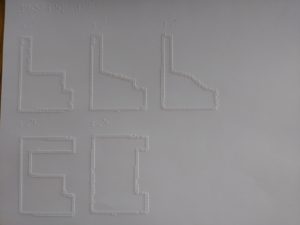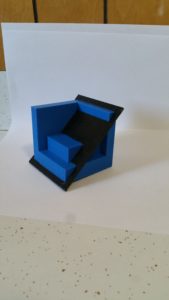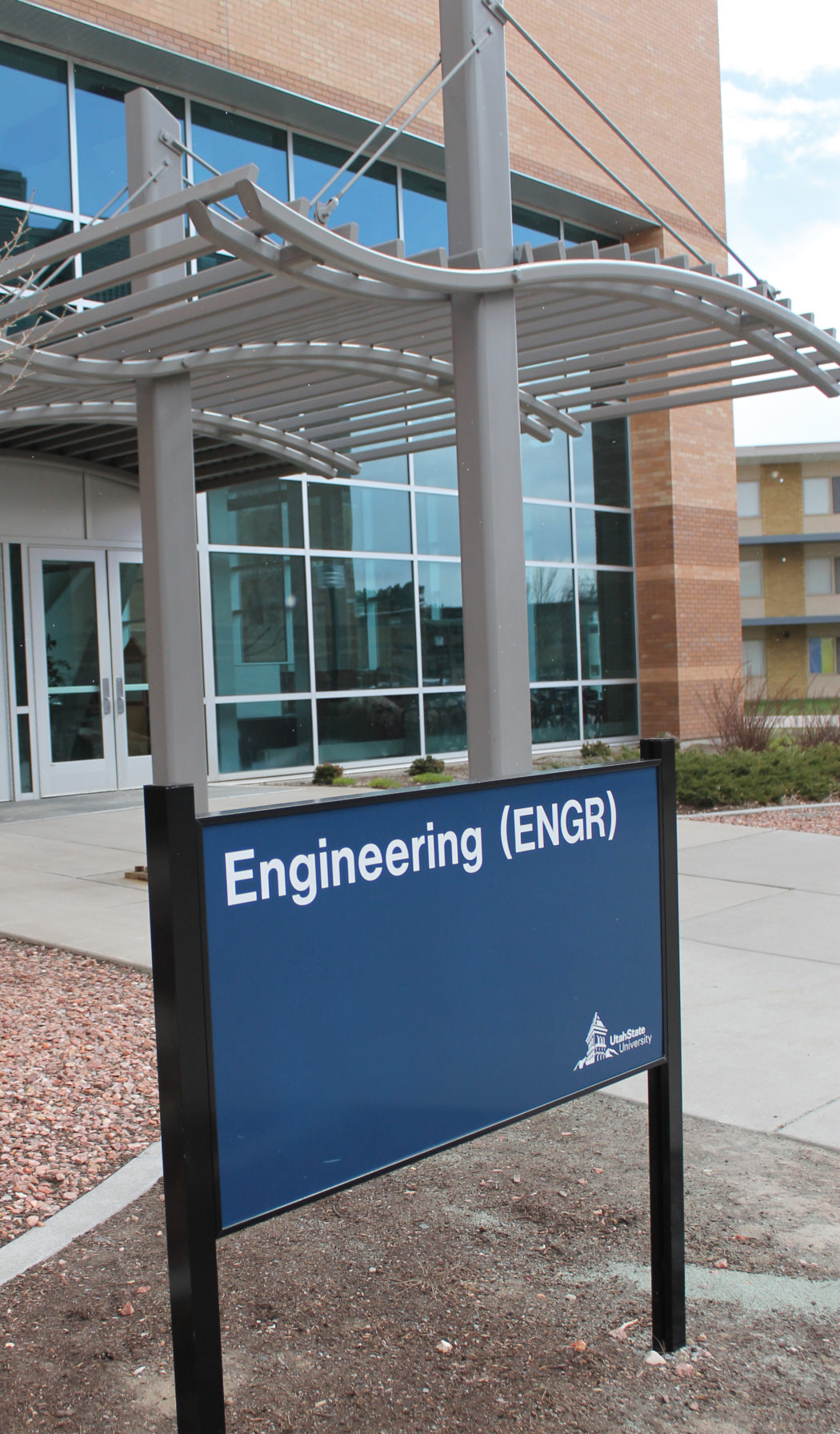USU engineering creates tactile Mental Cutting Test for blind and low-vision individuals
Utah State University engineering professor Wade Goodridge has been researching the spatial ability of those who are blind or have low vision since 2016. He is currently developing a way for these individuals to take the Mental Cutting Test, commonly used to test people’s spatial ability in the fields of science, technology, engineering and mathematics.
Spatial ability, Goodridge said, is a measure of an individual’s capability to exercise constructs of spatial thinking — like an object rotating or passing through a plane — then visualizing what the cut surface would look like.
Goodridge’s research involves creating a tactile, or touch-based, version of the test for those who are blind or have low vision. The test will allow them to feel the questions and the answers, and the results will provide insight into how much spatial ability blind and low-vision individuals have and how they can improve.
Tyler Ashby, Goodridge’s undergraduate research assistant, said the MCT was used as a college entrance board exam in the 1920s.
 Photo courtesy of Tyler Ashby
Photo courtesy of Tyler Ashby An example of an answer set for a question on the test.
Goodridge explained that individuals who are blind or have low vision navigate through a spatial model in their mind that they have developed from different resources.
An early partnership with the National Federation of the Blind helped put Goodridge’s research idea into action. Together, they came up with a grant to create the tactile version of the MCT.
“We are looking to make the tactile test and keep it as similar as we can to the original one,” Goodridge said.
Goodridge added that the geometry on the MCT gradually gets harder from the first question to the 25th.
Ashby explained that the test questions are put into an autoCAD program and printed out in the engineering education lab on campus.
A version of the MCT with 2D answers written in braille was another option presented to students, but Ashby said it was not well received.
Ashby expects the test will be ready for students to try out in the summer, which will allow the researchers to see what revisions need to be made to the its setup.
 Photo courtesy of Tyler Ashby
Photo courtesy of Tyler Ashby An example of a test question. The black plane is the cutting plane on which the test taker is to find the cross-section of the object.
Goodridge said the goal outcome of the test is to later develop engineering curriculum “that can enhance spatial ability for a myriad of different things.”
The Science Museum of Minnesota is also collaborating with USU and the National Federation of the Blind in this five-year project.
“From our collaboration, I would hope we would end up with a spatial ability instrument that’s valid and reliable for measuring blind people’s spatial ability,” said Natalie Shaheen, project director of the National Center for Blind Youth in Science. She wants to “develop engineering interventions that have some effect.”
Goodridge is excited to see the end results from the test so that engineering educators will know what works best with their specific situation.
“I think we have a great team together to tackle this thing, and it will open doors to spatial ability in a population that is typically underrepresented in engineering,” Goodridge said.
Goodridge published a paper the Rocky Mountain section of the American Society for Engineering Education discussing this process. This research will be presented by Ashby in Boulder, Colorado.
@bjr24601

